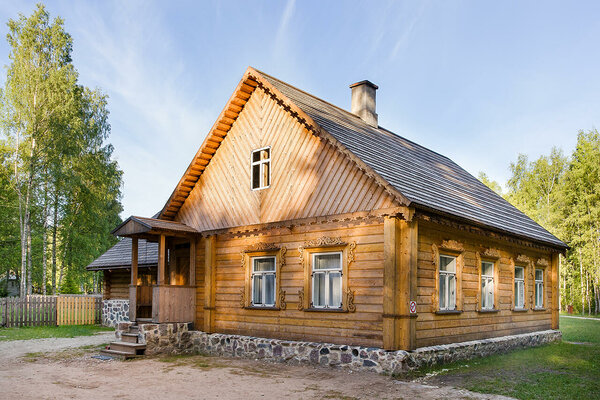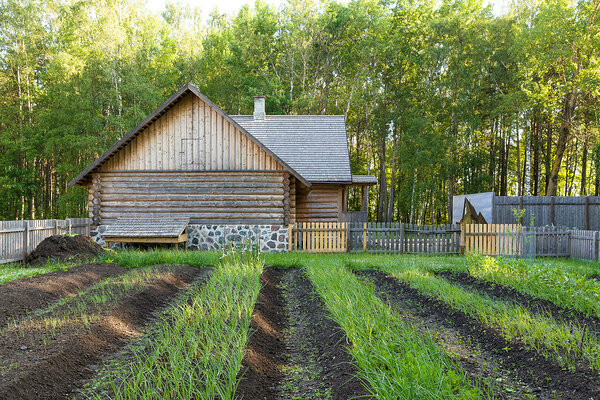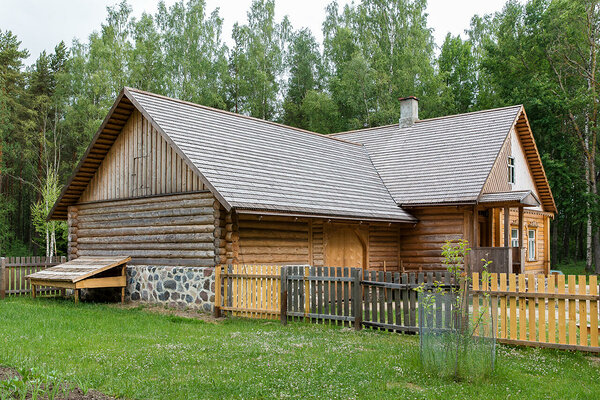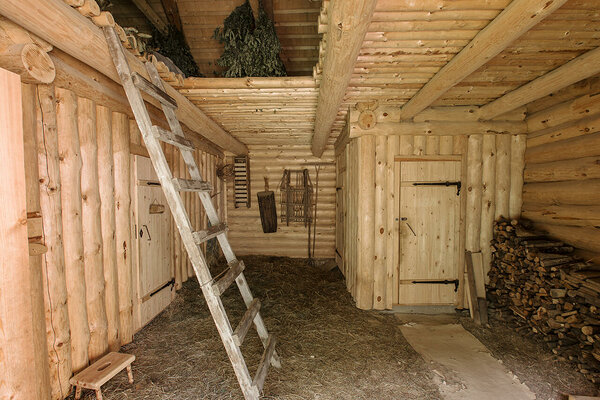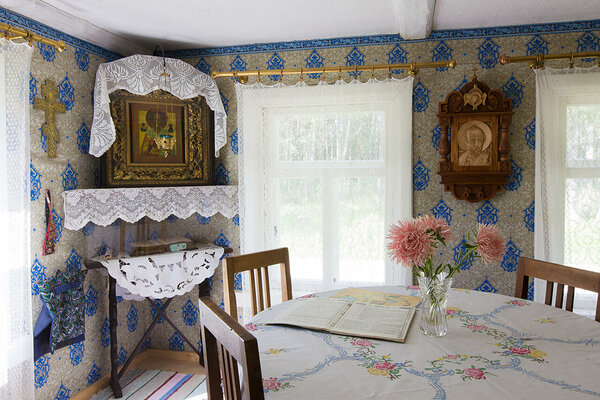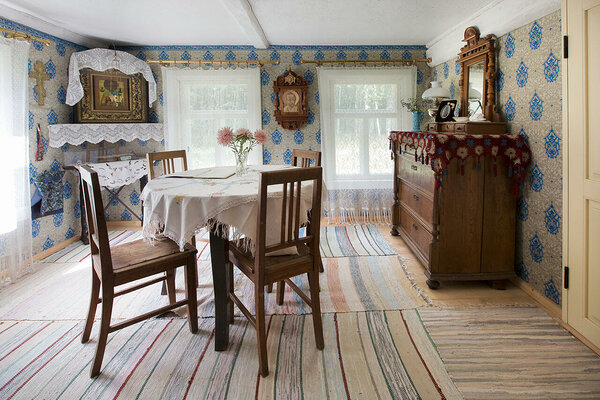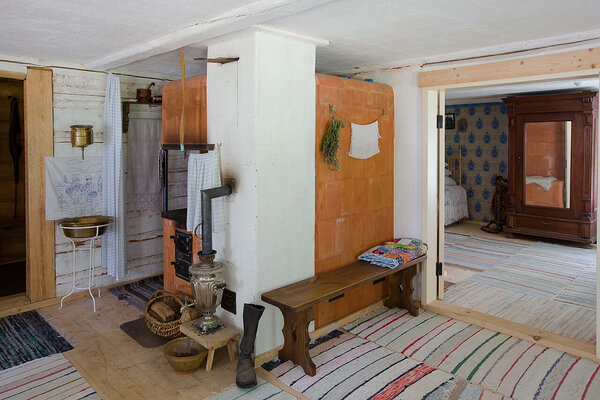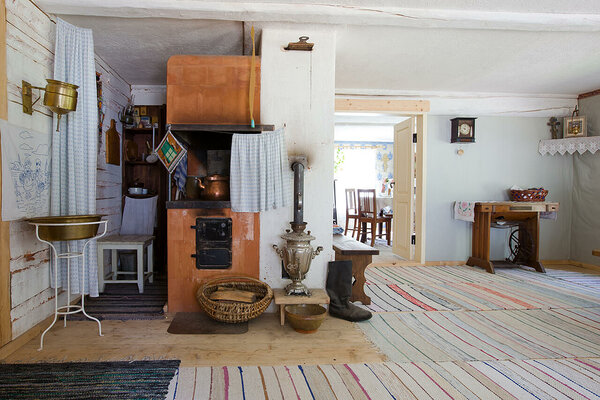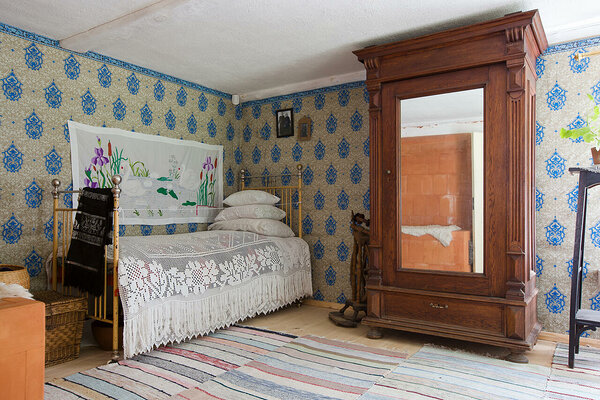House of an Old Believer, fisherman Pechonkin
The so-called Pechonkin’s house (by the owner’s surname) built in 1863 was brought from the town of Kallaste, former Kodavere parish.
The peculiar Russian settlement established on the shore of Lake Peipus was founded by Russian Old Believers who fled from Russia after the Orthodox Church dissent in the 18th century. The shore villages where soil was poor mainly lived off fishing, growing vegetables and, later, building work.
The dwelling was relocated in 1991.
The log house facing the village lane has eye-catching windows with saw-cut window borders. The entrance to the building is from the back corner of the end wall. The door opens to a corridor with a pantry at the end. On the right, there is an entrance chamber-cum-kitchen, and another room behind it. There is an oven between these two rooms; the stove is in the kitchen next to the oven. On the left, there is the so-called covered yard, which provided easy access to the barn and stable on the other side of the yard. There was enough space for a cow, a pig and a few sheep or goats.
Did you know?
- The milieu of the villages of Russian Old Believers by the Lake Peipus is vividly described in the novel „Ekke Moor“ by the Estonian writer August Gailit.
- In 1920 - 1930 there were over 10 000 Old Believers in Estonia. They formed 12 congregations in Peipsiveere, Tartu and Tallinn.
- In order to protect their food and water from evil forces, in the evening, the Old Believers used to cover up or make a cross sign on their dishes and buckets of water.
- The day of an Old Believer is accompanied by prayers. They pray in the morning, before meals, before starting important tasks and before going to the woods or swamps.
- Old Believers marked their plates and bowls, so that the nonbelievers would not use them. During a visit to another house they drank water from their own palm.
- Some elderly ladies among Russian Old Believers sing popular hymns even today.
- The fishermen from the Lake Peipus have preserved several old fishing methods, including ice fishing which has been improved from generation to generation.
